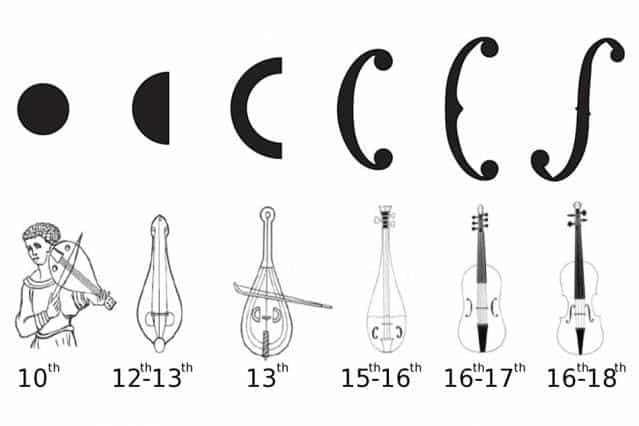In the 18th century, violin craftsmanship reached its peak in what came to be known as the Cremonese period — the golden age of violinmaking. During this age, Italian families like Amati, Stradivari, and Guarneri were on high request to deliver the finest violins, meant to be played in the finest concert halls of Europe.
Whether the old masters employed a scientific method in their manufacturing process to churn out the best possible sound is still debatable. What’s certain is that string instruments have gone a long way in terms of acoustic efficiency since the middle ages when the lute or oud dominated courthouses.
So, what gives these top-notch violins, like Stradivarius, their signature, powerful sound? According to a team of MIT engineers and violinmakers at the North Bennet Street School in Boston, the key to a violin’s sound is the shape and length of its “f-holes,” the f-shaped openings through which air escapes.
A golden sound
Nicholas Makris is a professor of mechanical and ocean engineering at MIT, known as an expert in acoustics. A decade ago Makris picked up the lute, initially having resolved to learn how to play the instrument with no consideration for acoustic. “I’m just going to play the thing,” Makris remembers.
The good professor couldn’t help himself, however, and soon enough he found himself discussing with lutemakers and musicians at large about what was once Europe’s most popular musical instrument.
Apart from its acoustic capabilities, the lute is appreciated for its intricate carvings. Inevitably, having learned Makris was an acoustic expert, a musician approached him with a question: Do the carvings within a lute’s sound hole make a difference to the overall sound produced?
This question led Makris on a seven-year quest to document the acoustics of the lute, but also the oud, medieval fiddle, guitar, and ultimately the violin.
In time, a massive catalog of technical drawings, along with X-ray and CAT scans of the instruments was formed. They compared the dimensions of various features from one instrument to another, as well as measurements of acoustic resonances across instruments.
Concerning the violin, Makris and colleagues discovered the key feature that affects its sound is its “f” shaped opening through which air escapes. The more elongated these are, the more sound a violin can produce.
What’s more, an elongated sound hole takes up little space on the violin, while still producing a full sound — a design that the researchers found to be more power-efficient than the rounder sound holes of the violin’s ancestors, such as medieval fiddles, lyres, and rebecs.

Besides the “f” shape, the thickness of the back of the violin also significantly contributes to the overall sound. A thicker back plate, they found, would boost a violin’s sound, as reported in the Proceedings of the Royal Society.
The researchers also wanted to plot the violin’s evolution. Measurements from hundreds of Cremonese-era violins were inserted into an evolutionary model and found that any change in design could reasonably be explained by natural mutation — or, in this case, craftsmanship error.
“We found that if you try to replicate a sound hole exactly from the last one you made, you’ll always have a little error,” says Nicholas Makris, a professor of mechanical and ocean engineering at MIT. “You’re cutting with a knife into thin wood and you can’t get it perfectly, and the error we report is about 2 percent … always within what would have happened if it was an evolutionary change, accidentally from random fluctuations.”
But, were the violinmakers aware of the features that affect the sound? For instance, did they know that a more elongated f-hole would provide a more efficient sound? Evidence suggests that it’s less a case of design than it is a mutation process. As is also the case with living organisms, mutation, and selection seem to have arrived at an optimal result.
“People had to be listening, and had to be picking things that were more efficient, and were making good selection of what instrument to replicate,” Makris says. “Whether they understood, ‘Oh, we need to make [the sound hole] more slender,’ we can’t say. But they definitely knew what was a better instrument to replicate.”
The group’s work might aid modern violinmakers design better, sturdier instruments. Makris cautions, however, that there’s more to making violins than just knowing what parameters to tweak.
“Mystery is good, and there’s magic in violinmaking,” Makris says. “Some makers, I don’t know how they do it — it’s an art form. They have their techniques and methods. But here, for us, it’s good to understand scientifically as much as you can.”






